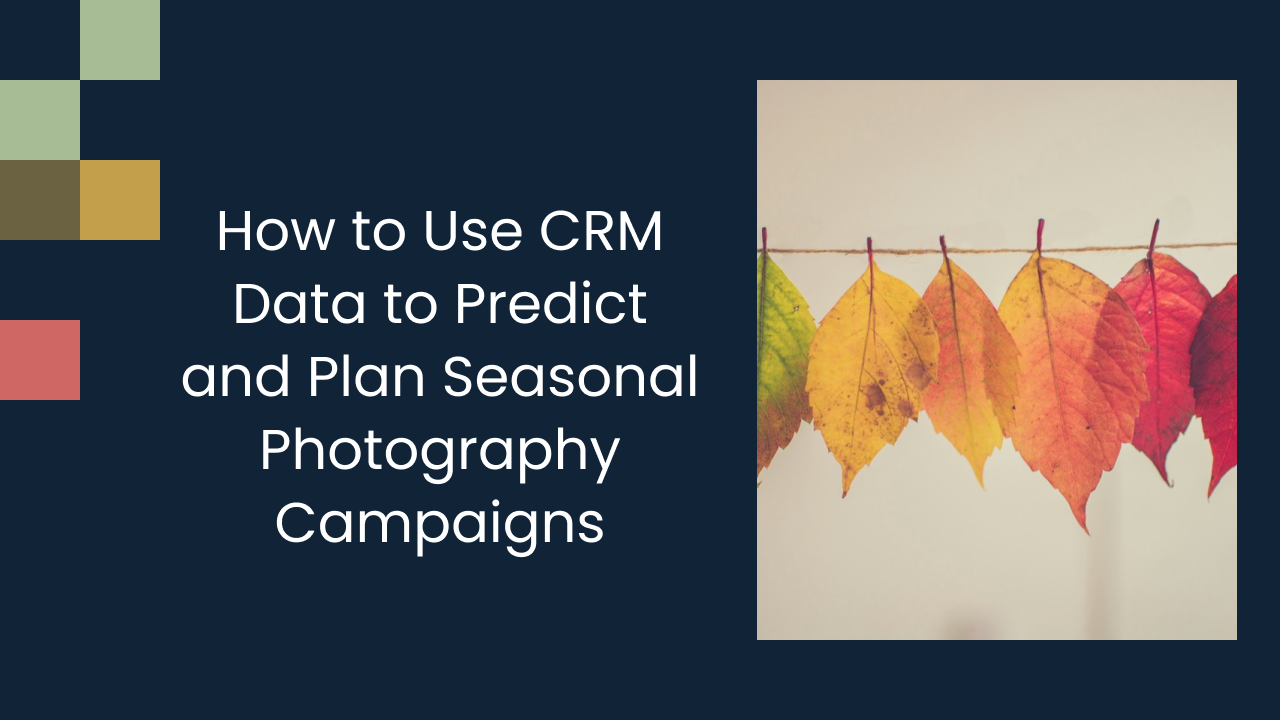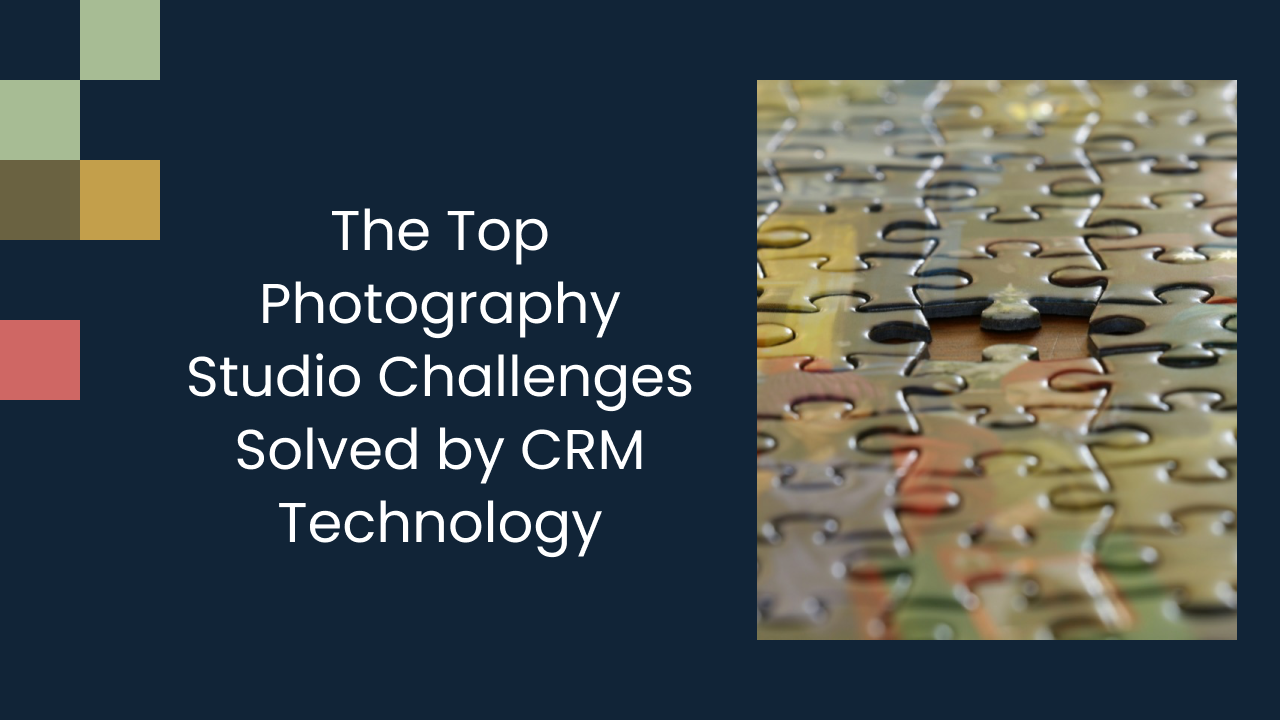How to Use CRM Data to Predict and Plan Seasonal Photography Campaigns

In the world of photography campaigns, success often hinges on understanding your audience and delivering targeted content. This is where Customer Relationship Management (CRM) data can play a vital role. By harnessing the power of CRM data, you can not only predict seasonal trends but also plan and execute campaigns that resonate with your target market.
Understanding the Role of CRM Data in Photography Campaigns
Prior to delving into the intricacies of using CRM data, it's essential to grasp the basics. CRM data refers to the information collected from customer interactions, including preferences, purchasing behaviors, and demographic details. This invaluable resource enables businesses to gain insights into their customer base, leading to more effective campaign strategies.
The importance of CRM data cannot be overstated when it comes to photography campaigns. By understanding your customers on a deeper level, you can tailor your messaging and visuals to evoke emotions and capture their attention. This personalized approach enhances the overall impact of your campaigns and increases the likelihood of customer engagement and conversion.
When analyzing CRM data for photography campaigns, it's crucial to segment your audience based on various criteria such as location, age, and past purchase history. This segmentation allows you to create targeted campaigns that resonate with specific customer groups, ultimately driving higher levels of interest and response.
Furthermore, leveraging CRM data in photography campaigns enables you to track the effectiveness of your marketing efforts more accurately. By monitoring key metrics such as click-through rates, conversion rates, and customer retention, you can refine your strategies in real-time to optimize results and maximize return on investment.
Predicting Seasonal Trends with CRM Data
Analyzing past campaign performance is a crucial step in leveraging CRM data to predict seasonal trends. By examining the successes and failures of previous campaigns, you can gain valuable insights into what resonates with your target audience during different seasons. This analysis allows you to identify patterns and trends, which serve as a solid foundation for future campaigns.
Identifying seasonal patterns and trends is another key aspect of utilizing CRM data for photography campaigns. By tracking customer behaviors and preferences throughout the year, you can identify recurring themes or needs that emerge during specific seasons. Armed with this knowledge, you can develop targeted content that aligns with these patterns, maximizing your campaign's effectiveness.
Moreover, delving deeper into CRM data can reveal not just seasonal trends, but also regional variations in customer preferences. Understanding how different geographical locations impact consumer behavior can provide valuable insights for tailoring campaigns to specific markets. For example, a photography studio may find that beach-themed photo shoots are more popular in coastal regions during the summer, while mountain landscapes resonate more with customers in colder climates during the winter.
Furthermore, by integrating external data sources such as weather patterns or local events into your CRM analysis, you can enhance the accuracy of your seasonal trend predictions. For instance, knowing that a particular city experiences a surge in outdoor events during spring can help you anticipate increased demand for photography services and adjust your marketing strategies accordingly.
Planning Your Photography Campaigns Based on CRM Data
Aligning your campaign goals with CRM insights is crucial for crafting impactful photography campaigns. Utilize the information gleaned from CRM data to develop clear and concise objectives that align with the preferences and needs of your customer base. This cohesive approach ensures that your campaign messaging and visuals are relevant and resonant, increasing the likelihood of customer engagement and conversion.
Optimizing campaign strategies with CRM data is another essential step in the planning process. Utilize the insights from CRM data to fine-tune your campaign strategies, such as selecting the right channels to reach your target audience or determining the optimal timing for your campaigns. By leveraging this data, you can make more informed decisions that lead to higher campaign success rates.
Furthermore, incorporating CRM data into your photography campaigns allows for personalized marketing efforts. By analyzing customer behavior and preferences stored in your CRM system, you can tailor your photography content to resonate with specific segments of your audience. This personalized approach not only enhances customer experience but also increases the likelihood of conversion and brand loyalty.
Another advantage of integrating CRM data into your photography campaigns is the ability to track and measure campaign performance more effectively. By monitoring key performance indicators (KPIs) derived from CRM insights, such as customer engagement levels and conversion rates, you can assess the impact of your photography campaigns in real-time. This data-driven approach enables you to make timely adjustments to your strategies, ensuring continuous improvement and optimization of your marketing efforts.
Leveraging CRM Data for Effective Campaign Execution
Ensuring campaign relevance with CRM data is critical for executing successful photography campaigns. Continuously monitor and update your campaign messaging and visuals based on evolving customer preferences and behaviors. By staying attuned to the insights provided by CRM data, you can maintain a high level of relevance and resonate with your audience.
Monitoring and adjusting campaigns using CRM data is an ongoing process. Regularly analyze campaign performance metrics and compare them to the data collected from your CRM system. This iterative approach allows you to identify areas for improvement and make data-driven adjustments to your campaign strategies. By constantly refining your approach, campaign effectiveness can be continually enhanced.
Moreover, leveraging CRM data can also help in segmenting your audience more effectively. By analyzing customer data such as purchase history, interactions with your brand, and demographics, you can create targeted campaigns that speak directly to the unique needs and preferences of different customer segments. This personalized approach can significantly increase engagement and conversion rates, as customers are more likely to respond to messages that are tailored to their specific interests.
Furthermore, integrating CRM data with other marketing tools and platforms can provide a comprehensive view of your customers' journey. By connecting CRM data with email marketing, social media, and website analytics, you can create a seamless and cohesive experience for your customers across all touchpoints. This omnichannel approach ensures that your campaigns are not only relevant but also consistent, reinforcing your brand message and building stronger relationships with your audience.
Measuring the Success of Your Photography Campaigns with CRM Data
Evaluating campaign performance through CRM metrics is essential to gauge the success of your photography campaigns accurately. Utilize the data collected from your CRM system to measure key performance indicators (KPIs) such as customer engagement, conversion rates, and return on investment (ROI). These metrics provide valuable insights into the impact of your campaigns and serve as a basis for future improvements.
Continuous improvement through CRM data analysis is the final piece of the puzzle. Regularly review and analyze the data collected from CRM systems to identify areas for refinement and enhancement. By utilizing the insights provided by CRM data, you can continually optimize your photography campaigns, adapting them to the evolving needs and preferences of your target audience.
When it comes to analyzing CRM data, it's crucial to not only focus on the quantitative metrics but also delve into qualitative data. Understanding customer feedback, preferences, and behavior patterns can provide a more holistic view of your photography campaigns' performance. By incorporating qualitative insights into your analysis, you can tailor your campaigns to better resonate with your audience on a deeper level.
Moreover, leveraging CRM data can also help in personalizing your photography campaigns. By segmenting your audience based on CRM insights such as past purchase history, preferences, and demographics, you can create targeted campaigns that speak directly to the unique interests of different customer segments. Personalization not only enhances customer engagement but also increases the likelihood of conversion, ultimately driving the success of your photography campaigns.
Looking for an easier way to manage and grow your studio? Experience a platform built by a photographer, for photographers. Try it free for 2 weeks.











